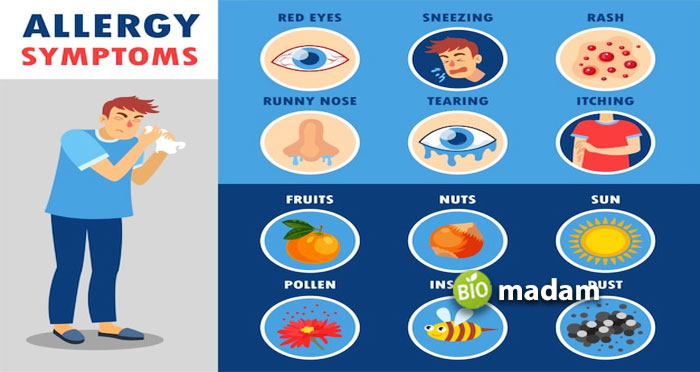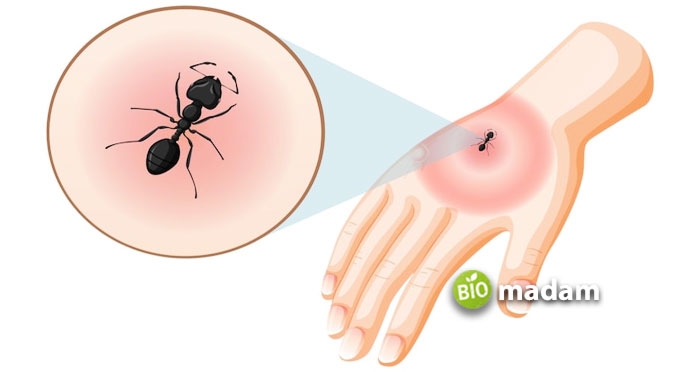You may be surprised to know that around one-third population worldwide has one or the other type of allergy.
Studies show that 10 to 30% of the global population is affected by allergic rhinitis.
While allergies are so common, not everyone has the same type of allergy. Allergies may be classified as seasonal allergies, food allergies, plant allergies, pet allergies, pollen allergies, etc. They typically occur when your body reacts to a foreign entity and exhibits signs and symptoms. But, how does an allergic reaction occur?
How does an Allergic Reaction Occur?
Allergies are your body’s defense system reaction to a foreign body or antigen. When your body does not identify an entity as its part or something it has interacted with before, it takes it as a threat and acts on it. However, during an allergic reaction, the immune system generates an exaggerated response to the foreign entity. The primary factor differentiating hypersensitivity reactions from the usual defense mechanism is that the foreign substances producing an allergy in your body might not do the same to another person. The other person’s body might not produce the same antibodies against those antigens the way it produced yours.

Example
A common example includes nut allergy. Millions of people in the world consume nuts in their diet, and around 1.1% of the general population is allergic to peanuts. Though your body does not think of peanuts as a threat, their bodies do.
Let’s tell you how the process of allergy/hypersensitivity takes place.
Stages of Allergic Reaction
The three stages of allergic reaction are sensitization, early phase, and late phase. These collectively contribute to producing an allergic reaction resulting in visible symptoms mostly.
Sensitization
The first step of the allergic reaction is the sensitization of the immune system to the foreign entity. It is sometimes named exposure to the antigen. An antigen may enter your body through your mouth (food allergies) or nose (pollen allergies). When it enters the body, it encounters the immune system, which decides if an immune reaction is needed or not. If the body detects it as a potentially harmful foreign object, it produces a specific antibodies called IgE by B lymphocytes. Immunoglobulin E production in response to a particular antigen means that your body is sensitized to it. The foreign entity is referred to as an allergen that can now generate an allergic response in the body.
The Immunoglobulin E then attaches itself to the mast cells, which are the type of white blood cells. They are present in numerous body tissues, especially the skin and airways; that’s why you feel breathless, or rashes appear during a hypersensitivity reaction. This process of sensitization is the body’s initial response by breaking the antigen, producing different types of antibodies, and attaching them to the mast cells. Further, early and late allergic reactions may occur.
Early Phase
The early allergic reaction phase can be simply defined as the hypersensitivity reaction that occurs within the first hour of exposure to the antigen.

When an allergen re-enters your body after sensitization, your body is all ready to fight it and produce an immediate response to it. The IgE antibodies are activated, and they start binding to the mast cells. This results in the activation of mast cells and the release of histamine and other inflammatory substances known as mediators. These mediators bind to the target cell receptors and produce allergic responses, including bronchiole constriction and dilation of blood vessels. These lead to symptoms like sneezing, coughing, wheezing, redness of the skin, etc.
Late Phase
Converse to the early phase; the late phase reactions do not occur immediately. They either follow early-phase allergy reactions, or your body takes time to respond to the allergen. When preceded by the early phase reactions, the activated mast cells bring along other inflammatory cells to the site of action, including basophils, eosinophils, lymphocytes, and neutrophils. These inflammatory cells also produce chemicals that result in symptoms of allergy.
Typically the duration of late-phase reactions is between 2 to 6 hours after the allergen enters the body and peaks at 6 to 9 hours of the interaction. Late-phase allergic reaction symptoms include nasal congestion due to excessive mucus congestion that may last for some time. Compared to early-phase reactions, these could be more serious.
FAQs
How can I tell If I have an allergy?
Allergies commonly exhibit themselves through symptoms like hives, wheezing, and excessive sneezing. Yet, you cannot confirm an allergic reaction or allergen without proper blood or plasma tests. Allergists monitor a person’s medical history, followed by adequate tests to confirm the kind of allergy and allergen. While they mostly diagnose through skin tests, blood tests may also be conducted.
What are the common symptoms of allergy?
Common symptoms of allergy are coughing, sneezing, wheezing, runny nose, watery eyes, hives, and rashes in the initial stages of an allergic reaction, followed by nasal congestion in the later phase. Allergen-specific symptoms include diarrhea, vomiting, and cramps in case of food allergies; swelling, pain, and redness occur due to an insect sting.
Can I die from allergies?
People who do not have allergies usually think they are a mild chemical reaction to eating or inhaling something the body did not find right. In contrast, people with allergies understand the seriousness as it stays for hours and even days. Such people often wonder if they could die from a serious allergic reaction. You can prevent reactions by avoiding allergens. Yet, if the allergic reaction is severe, it can cause several breathing problems and low blood pressure leading to death. It’s nothing to be scared of as you can easily manage them by avoiding intake of allergens and appropriate treatment. Furthermore, you can engage yourself in different breathing exercises to overcome the abnormal breathing patterns caused by allergy.
The Bottom Line
Allergies are of multiple kinds and may occur in any person. They typically result from an aggravated immune response by your body to a foreign entity. The first stage of the allergy reaction is sensitization to the allergen, followed by early and late-phase reactions. The reactions are produced by chemicals called mediators. Early-phase reactions typically present within the first hour of antigen exposure, whereas late-phase reactions may take 2 to 6 hours to show symptoms.

Anna has completed her degree in Pharmacy from the University of Hawaii. She is serving as a research assistant in a pharmaceutical company. She had a great interest in writing blogs, traveling to different parts of the US, and trying delicious recipes in her spare time.

